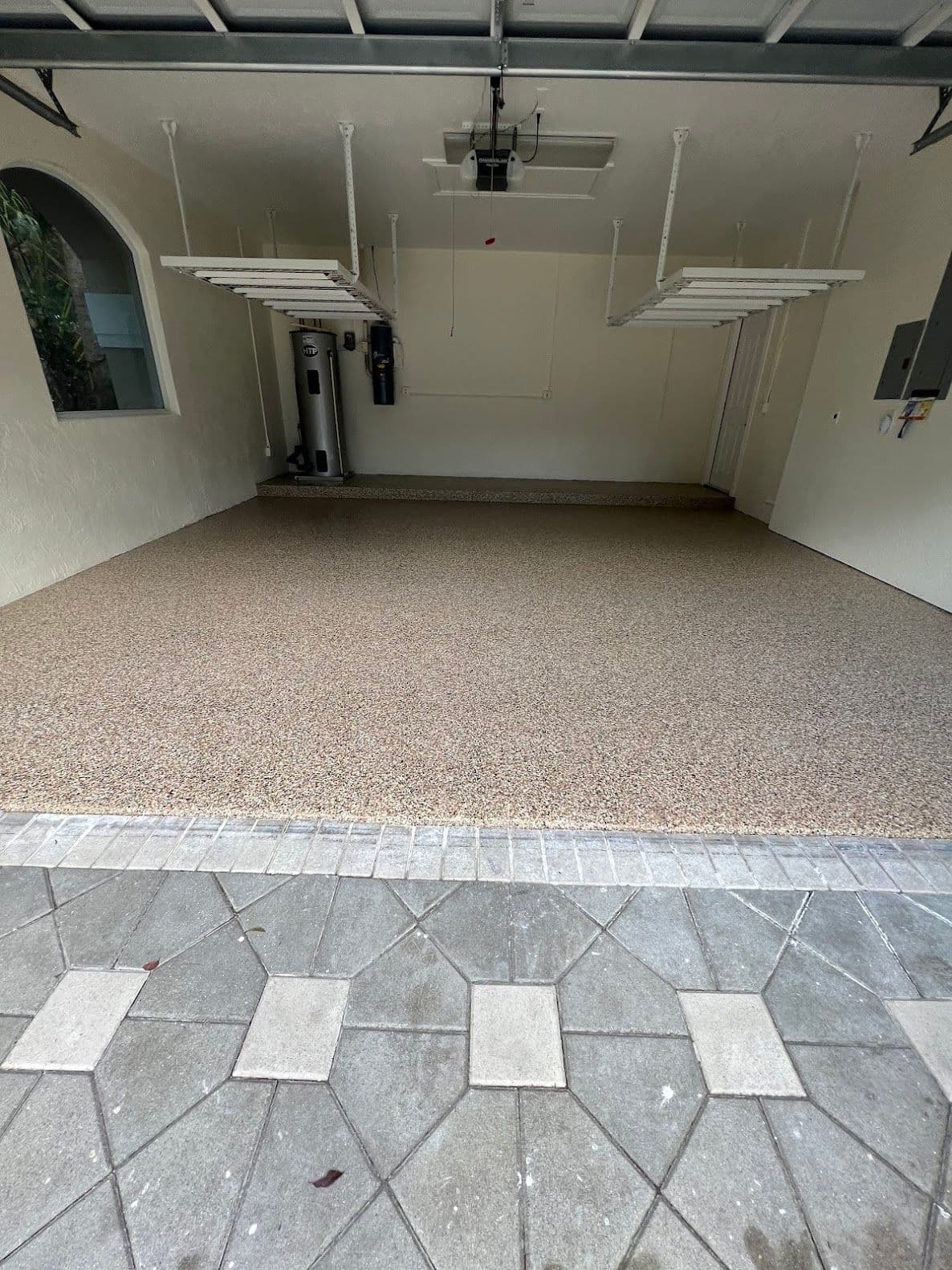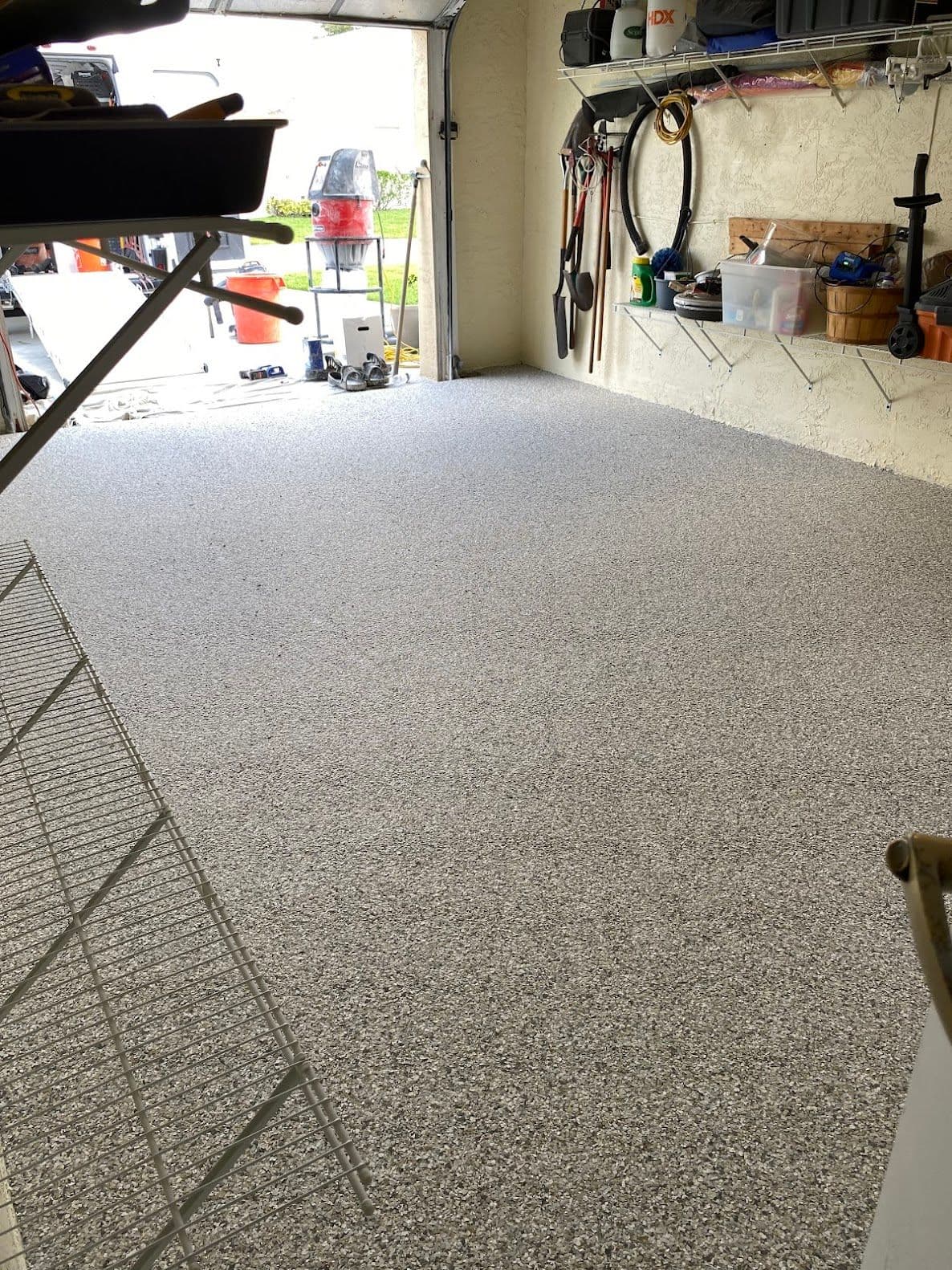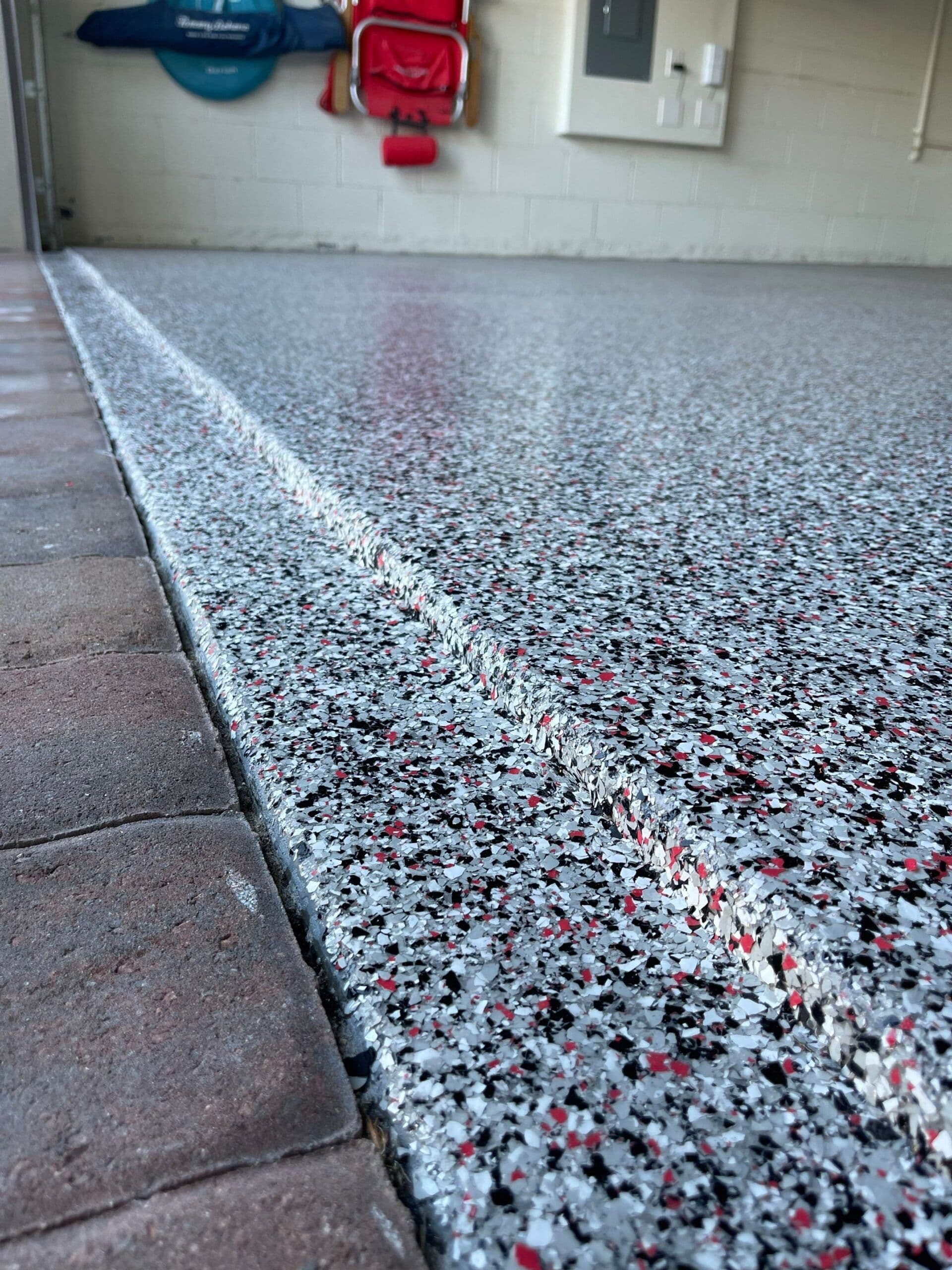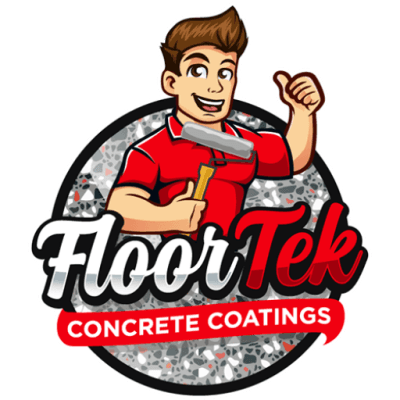Beyond the Shine: 7 Critical Drawbacks of Epoxy Garage Floors You Must Discover

If you're a homeowner in the United States, you've seen them. Those gleaming, showroom-style garage floors that look too good to be true. Your neighbor might have one, and now you're thinking about getting one, too. However, before you do, it's essential to understand the drawbacks of epoxy garage floors. We're Floortek Coatings, and we've built our business by fixing the failures of cheap epoxy jobs. With our extensive experience and expertise, you deserve the whole story, not just the glossy brochure.
The truth is that beautiful epoxy shine often hides a long list of problems. These issues are frustrating and usually result in higher costs in the long run. We’ve seen these failures time and time again, from the humid, sticky air of the Southeast to the freezing, concrete-cracking winters of the Midwest. The climate in the United States is harsh on garage floors, and traditional epoxy isn't well-suited to handle it.
This article isn't meant to list problems; it's here to show you the reality we see every day. We want you to understand why these floors fail so that you can make a more informed choice. It's why we moved away from epoxy and now specialize in advanced polyaspartic garage floor coating systems. These are 1-day garage floor coatings that not only solve all the problems epoxy creates but also save you money in the long run.
We want you to have a floor that lasts. As you read this, we're offering 30% off on your first installation for new customers. This offer includes the following specific details: [particular details of the offer]. Please continue reading to discover the truth about epoxy, and then learn why our system is 10 times better than epoxy.
Drawback 1: The Dreaded "Hot-Tire Pickup" and Peeling
This is, without a doubt, the number one complaint we hear. A homeowner pulls their car into the garage after a standard drive, and the next day, they back out, pulling a sheet of the epoxy coating right off the floor. This is called "hot-tire pickup."
Here’s what happens in simple terms: Your car's tires get hot from driving. When you park, that heat softens the low-quality epoxy resin. The tire tread then "grabs" the softened coating, and as it cools, it bonds to it. When you leave, the epoxy goes with it, leaving a bare, ugly concrete patch.
But that's not the only way it fails. The other major cause of peeling is moisture. Your concrete slab looks solid, but it's actually like a hard sponge. It constantly has tiny amounts of moisture vapor moving up through it from the ground. Epoxy is a non-breathable, plastic sheet. It traps this moisture. Eventually, the pressure builds up, and the water pushes the coating right off the concrete, causing bubbles and massive peeling.
This is a significant issue in areas with high humidity or frequent rainfall and snowfall. The ground is damp, and that moisture will find a way out. According to the US General Services Administration, moisture testing is a critical step, but it's one that cheap epoxy installers almost always skip. They roll on the paint and hope for the best, leaving you to deal with the peeling mess. It’s a key reason why how long does epoxy last is such a debated question; when it's not done right, the answer is "not long at all." This isn't resurfacing a garage floor; it's just putting a temporary layer of paint on it.
Drawback 2: A Smooth, Glossy Floor Can Be a Hazard
That beautiful, glass-like shine is the main selling point of epoxy. Unfortunately, it's also one of its most significant weaknesses. When that high-gloss surface gets even slightly wet from rain, snowmelt, or a spilled drink, it can become incredibly slick. We've heard from homeowners who feel unsafe just walking in their own garage on a rainy day. With our polyaspartic floors, safety is a top priority, allowing you to feel confident in your footing, even on wet surfaces.
What do epoxy installers do to correct this issue? They'll offer to mix in sand or sharp polymer "grit" into the topcoat. The problem is, this "fix" creates two new problems.
It Kills the Shine: The very reason you bought the floor—that beautiful gloss—is now dull and hazy.
It's Impossible to Clean: The gritty texture traps dirt, mud, and oil. You can't just wipe it clean. You end up with a floor that's permanently dirty and rough, and it still doesn't offer a consistent footing.
This is primarily a concern for surfaces that are always near water, such as a pool deck coating service, where you need a surface designed from the ground up to be safe when wet, not one that treats it as an afterthought.
Drawback 3: That New Floor Won't Look New for Long (UV Fading)
Here's another secret of the epoxy world: most epoxy resins are not UV-stable. This means that if sunlight hits them, they will break down and change color. This is known as "ambering" or yellowing.
If you live in a sunny part of the United States, like Florida, Texas, Arizona, or California, this is a deal-breaker. Leaving your garage door open for just a few hours each day will expose your floor to sunlight. Within a year or two, you will have a transparent, yellowed rectangle on your floor where the sun hits. It looks terrible and cheapens the entire look of your home.
This also means that the beautiful Colors and Flake Options you spent weeks picking out will fade and discolor. The whites turn yellow, the grays turn brownish, and the vibrant blues become dull. You won't see 5-year-old epoxy floors in their Gallery, because they don't look anything like the day they were installed. This fading is one of the most visible drawbacks of epoxy garage floors and one that homeowners are most disappointed by.
After learning about the Drawbacks of epoxy and the benefits of our polyaspartic floor coatings, we encourage you to take the next step towards a durable, long-lasting garage floor. Contact us today to schedule your installation and experience the difference our advanced coating system can make.
Discovering the drawbacks of epoxy garage floors can be frustrating. You paid for a professional garage floor coating, but you're left with a product that fails to meet expectations. This is what leads so many homeowners to search for a polyaspartic vs epoxy garage floor comparison. They want to know what the best garage floor coating is because they've learned the hard way that epoxy isn't it. The drawbacks of epoxy garage floors are not just minor annoyances; they are fundamental flaws in the product.
Drawback 4: It's a Rock-Hard Coating, and That's a Problem
People think that a rock-hard floor is a good thing, but for epoxy, it's a considerable drawback. Epoxy cures into a very rigid, brittle, and inflexible plastic shell. Your concrete, on the other hand, is a porous material that naturally moves, expands, and contracts with temperature changes.
What happens when you drop a heavy wrench or a hammer? The brittle epoxy can't absorb the impact. Instead, it chips or creates a "spider web" crack. Now you have a permanent, ugly blemish on your floor.
This is even worse in states with cold winters. If you live in the Northeast or Midwest, you're familiar with frost heave. The ground freezes and thaws, which causes your concrete slab to shift, expand, and contract. A rigid epoxy floor can't flex with this movement. Instead, it cracks under stress, and those cracks will only grow larger over time. This is a common issue for concrete surfaces, such as driveways or sidewalks, but it's just as true for your garage.
Drawback 5: You Can't "Just Patch It"
This is one of the most expensive drawbacks of epoxy garage floors. When your floor chips, cracks, or peels, you can't just "patch" the spot. It's impossible for two main reasons:
Color Mismatch: The new batch of epoxy will never match the old one. Even if it's from the same can, your original floor has already faded and yellowed from the sun (see Drawback 3). The new patch will stick out like a sore thumb.
It won't Blend: You will always see the edges of the patch. It will look like a straightforward, ugly "fix."
So, what is the real solution to repair a damaged epoxy floor? You have to grind the entire floor back down to bare concrete and start all over again. You're paying for the whole job a second time, all because of one chip or one peeling spot. There are many floor resurfacing techniques, but properly resurfacing a garage floor with epoxy is a meticulous and thorough process.
Drawback 6: Your Garage Is Out of Commission for a Week
What epoxy installers often don't advertise is the actual time it takes to complete the process. It's not a weekend project. It's a long, smelly, and disruptive process that takes your garage (and everything in it) hostage for 5 to 7 days.
Here's a typical epoxy timeline:
Day 1: Acid etching or diamond grinding the floor. This is a crucial step for preparing your floor for a new polyaspartic concrete coating, but with epoxy, it's just the beginning.
Day 2: Apply the primer coat. Allow 12-24 hours for the mixture to cure. Your garage is now filled with chemical fumes.
Day 3: Apply the color coat and throw the flakes. Wait another 12-24 hours for this to cure. The fumes get worse.
Day 4: Apply the clear topcoat. Wait... you guessed it... another 24 hours just to be able to walk on it.
Day 5-7: Wait for the floor to "fully cure." You cannot park your car on it for up to a whole week. All your stuff—your toolboxes, your mower, your bikes, your vehicle—is sitting in the driveway or on the lawn the entire time.
And the smell. Epoxy releases a considerable amount of Volatile Organic Compounds (VOCs). These are chemicals that can cause headaches and respiratory irritation. According to the US Environmental Protection Agency (EPA), VOCs can be harmful to your health. That strong chemical smell can seep into your home and linger for weeks. This is a massive disruption to your life that our 1-day garage floor coatings avoid entirely.
Understanding the Drawbacks of Epoxy Garage Floors vs. Modern Solutions
For decades, homeowners had no choice but to accept these issues. When you wanted a finished garage, you had to discover the drawbacks of epoxy garage floors on your own, usually after it was too late. But thankfully, technology has improved, and you no longer have to settle.
The reason so many people are now searching for polyaspartic garage floor options is that they are actively seeking a solution that won't peel, fade, or crack. They are asking, "Is polyaspartic better than epoxy?" (Spoiler: yes, it is). A polyaspartic garage floor coating comparison with epoxy reveals that this newer, more advanced technology addresses all the significant drawbacks of epoxy garage floors.
Drawback 7: Epoxy Is Just a Thick Paint That Hides Problems
Here is the final, hard truth: epoxy is a cover-up, not a proper fix. It's a thick layer of plastic paint that sits on top of your concrete. It doesn't bond with it or become part of the slab.
This means that if your concrete has any underlying issues, the epoxy will not adhere properly.
Is your concrete damp? It will peel.
Is your concrete oily or stained? It won't stick.
Is your concrete cracking or spalling (flaking)? The epoxy will crack and flake right along with it.
Shady installers love epoxy because it can be applied directly over a poorly prepared or damaged slab. It will look great for the first few months—long enough for them to cash your check and disappear. However, the underlying problem persists, and it will quickly deteriorate the coating from the inside out. When you're looking for garage coating companies near you, you need one that addresses the root problem, not just the type of concrete coating.
Tired of Epoxy Drawbacks? A Better Solution Is Here
After years of seeing homeowners like you get burned by these exact problems, we at Floortek Coatings knew there had to be a better way. We decided to stop using outdated products and build our business on a system that is 10X better than epoxy: our polyaspartic and polyurea coating system.
This is the next generation of floor coating technology. It's not paint. It's a system chemically designed to address every single drawback of epoxy garage floors.
No Peeling or Hot-Tire Pickup: Our system wicks into the concrete, bonding with it on a molecular level. It's not just sitting on top; it becomes one with your floor. It will not peel, period.
A Better Surface: The vinyl flake system we use is broadcast to "rejection," meaning the floor is completely covered. This creates a natural texture that gives you footing, even when the floor is wet. And it's still incredibly easy to clean.
100% UV Stable: Our polyaspartic floor coating is 100% UV stable. It will never yellow or fade, even in the direct, harsh sun of Florida or Arizona. The color you pick is the color it stays.
Flexible and 4x Stronger: Our system is 4 times stronger than epoxy, yet remains flexible. It can handle dropped tools and impacts. It also flexes with your concrete during those freeze-thaw cycles, so it will not crack.
Easy Repairs: In the rare event that you damage the floor (such as dropping an engine block on it), we can patch it perfectly. Our system blends seamlessly, and since it doesn't fade, the color always matches.
A True 1-Day Installation: This is the best part. We offer true one-day garage floor coatings. Our team diamond-grinds the floor, applies the base coat, broadcasts the flakes, and applies the clear top coat all in one day. There are no harsh fumes (low-VOC), and you can walk on it in 4 hours and park your car on it in 24 hours.
This is the technology we use for all our services, from patio coating and Basement coating to laundry rooms. It's a permanent solution, which is why we can confidently back it with our warranty.
Stop Worrying About Epoxy Floors. Get Your Free Quote Today.
Don't settle for a temporary floor that will chip, peel, and fade. You've worked too hard for that. Now that you've learned the truth and can discover the drawbacks of epoxy garage floors for yourself, you can make an informed choice.
You deserve a floor that adds real value to your home and lasts for as long as you live there. Discover more about us and our dedication to excellence. When you're ready, please don't hesitate to contact us or call us at 844-844-4164.
We're offering 30% off on the first installation for new customers who want to do it right the first time. Get your Free Quote today and let us show you what a real, permanent garage floor looks and feels like.
Your Questions About the Drawbacks of Epoxy Floors
We receive many questions from homeowners who are trying to understand the real story behind epoxy. Here are some of the most common ones.
1. What is the single biggest drawback of an epoxy garage floor?
The single most significant drawback is peeling and delamination. This includes "hot-tire pickup." Because epoxy is a non-breathable coating that sits on top of the concrete, it's very prone to being pushed off by moisture from below or pulled off by hot tires from above. This is the most common failure we see.
2. How can I avoid the drawbacks of epoxy garage floors?
The best way to avoid the drawbacks of epoxy garage floors is to choose a more advanced and durable system from the start. This is why we exclusively use polyaspartic coatings for garage floors, as they are chemically engineered to address the common problems associated with epoxy, such as peeling, fading, and cracking.
3. Will epoxy crack in cold US winters?
Yes, it is likely. Epoxy cures into a hard, brittle, glass-like shell. In cold climates, such as the Northeast and Midwest, your concrete slab will expand and contract during freeze-thaw cycles. The rigid epoxy can't flex with this movement, so it cracks under the stress. This is one of the significant drawbacks of epoxy garage floors for anyone living in a cold part of the country.
4. Why does my epoxy floor look yellow?
Your epoxy floor looks yellow because it is not UV-stable. Most standard epoxy resins are broken down by ultraviolet light (sunlight). This "ambering" is a chemical reaction. If your garage door is open and sunlight hits the floor, it will turn a yellowish hue. This is a permanent and irreversible drawback.
5. Is it true that repairing epoxy is difficult?
Yes. In fact, "difficult" is an understatement. It's practically impossible to "patch" an epoxy floor. The new patch will never match the faded, older floor, and you'll always see the seams. The only real fix for a peeling or cracked epoxy floor is to diamond-grind the entire surface down to bare concrete and start over, which is why understanding the life expectancy of a polyurea coating versus an epoxy coating is so important.
6. I want to discover the drawbacks of epoxy garage floors. What about the smell?
The smell is a significant drawback. Epoxy installation releases high levels of Volatile Organic Compounds (VOCs), which are strong, chemical fumes that can be harmful to breathe. This smell can last for days and seep into your house. A polyaspartic garage floor coating, by contrast, is very low-VOC, and the faint smell it does have dissipates within a few hours.
7. What is a polyaspartic coating, and why is it better?
What is a polyaspartic concrete coating? It is an advanced type of coating that belongs to the polyurea family. It's better than epoxy in every measurable way: it's 4x stronger, 100% UV stable (it won't yellow), more flexible (it won't crack), and bonds into the concrete (it won't peel). Plus, it can be installed in just one day.
8. What's the best garage floor coating, then?
When you ask, 'What's the best garage floor coating?' the answer for us is clear: a polyaspartic/polyurea system. It provides the best way to improve your garage floor, offering all the beauty of epoxy with none of its critical drawbacks. You get a beautiful floor in one of our many Colors and Flake Options that will actually last.
9. Can I use a DIY epoxy kit?
DIY kits are the worst offenders. They use low-quality, water-based epoxy and don't come with the 1,000-pound diamond grinders needed to prepare the floor properly. These kits are almost guaranteed to peel and fail, often within six months. If you discover the drawbacks of epoxy garage floors from a DIY kit, you'll be even more frustrated.
10. How much does a Floortek polyaspartic floor cost?
The cost of our garage coatings depends on the size of your garage and the condition of your concrete. However, we provide a Free Quote with no obligation. Currently, new customers can receive 30% off their first installation. When you consider that our floors last for the life of your home and you'll never have to pay to fix them, it's a much better long-term investment than any epoxy. You can also review our Coating Products or our main Coating Products page for more details.
FREE In-Home Estimate
Plus 30% Off
Testimonials

We had both of our garages done and an outdoor concrete platform. The crew was courteous and professional. Everyone from Nancy our salesperson to Patrick, the manager, Logan and his crew were outstanding. Our floors look fantastic and we were very happy we chose this company.

I am very pleased with the quality of work FloorTek has done for me. The two employees that did the actual work were very courteous, worked hard, and explained everything they were doing. Thank you for a great job.

I was happy with the job Floortek did. Good customer communication and customer relationship. My old ugly porch was transformed and I love it. Nancy was very helpful throughout the process. Just know that rain may impact your schedule to make sure the products at highest quality during application.



Contact FloorTek Today


